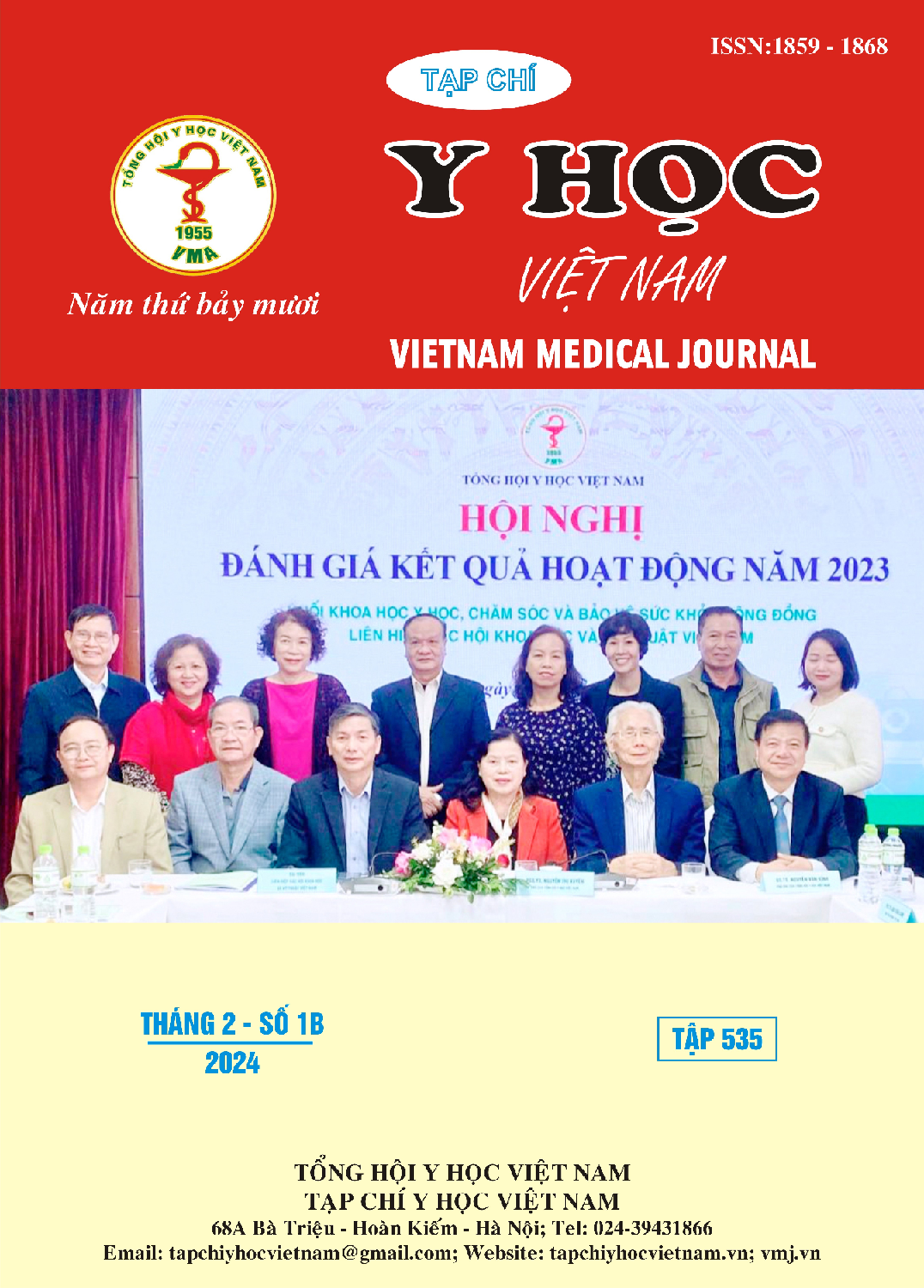EFFECTIVENESS OF THE ALBUMIN-BILIRUBIN SCORE (ALBI) IN PREDICTING EARLY RECURRENCE AFTER HEPATECTOMY FOR HEPATOCELLULAR CARCINOMA
Main Article Content
Abstract
Objective: Evaluate the effectiveness of the Albumin-Bilirubin score (ALBI) in predicting early recurrence after hepatectomy for hepatocellular carcinoma at Central Military Hospital 108. Materials and methods: Retrospective study of patients with hepatocellular carcinoma underwent Takasaki’s Glissonean pedicle transection in open hepatectomy from January 2016 to December 2022 at Central Military Hospital 108. Results: 231 patients underwent Takasaki’s Glissonean pedicle transection in open to treat squamous cell carcinoma, the mean was 55.13 years old, the male ratio was 87.0%. The mean size of liver tumors is 61.36mm. The average ALBI score was 2.66 ± 0.4; ALBI grade 1 accounts for the majority of 61.0%. Postoperative complication rate was 18.2%, the overall recurrence rate was 43.7%, and early recurrence rate was 15.6%. The overall survival rate after 5 years is 66.8%, the overall survival time after surgery is estimated at 74.6 ± 2.2 months. Through univariate regression analysis, the ALBI score was related to the rate of early relapse in the study with p < 0.05. An increase of 1 unit in the ALBI score increased the risk of early relapse 2,558 times. Conclusion: The ALBI score is a good prognostic factor used to assess the risk of early recurrence before hepatectomy for hepatocellular carcinoma.
Article Details
Keywords
Albumin-Bilirubin scale, hepatocellular carcinoma, early recurrence.
References
2. Tung-Ping Poon R, Fan ST, Wong J (2000). “Risk factors, prevention, and management of postoperative recurrence after resection of hepatocellular carcinoma”, Ann Surg, 232: 10-24.
3. Harimoto N, Yoshizumi T, Sakata K, et al (2017). “Prognostic significance of combined albumin-bilirubin and tumor-node-metastasis staging system in patients who underwent hepatic resection for hepatocellular carcinoma”, Hepatol Res, 47: 1289-1298.
4. Lee YH, Koh YS, Hur YH, Cho CK, et al (2018). “Effectiveness of the albumin-bilirubin score as a prognostic factor for early recurrence after curative hepatic resection for hepatocellular carcinoma”, Ann Hepatobiliary Pancreat Surg, 22(4): 335–343.
5. Schwartz JM, Carithers RL. Epidemiology and etiologic associations of hepatocellular carcinoma. 2018; Available from: www.uptodate.com.
6. Nguyễn Cường Thịnh (2014), Ung thư biểu mô tế bào gan: kỹ thuật cắt gan kết hợp phương pháp Tôn Thất Tùng và Lortat Jacob, Nhà xuất bản y học, Hà Nội.
7. Chinburen J, Gillet M, Yamamoto M, et al (2015). “Impact of Glissonean Pedicle Approach for Centrally Located Hepatocellular Carcinoma in Mongolia”, Int Surg, 100(2): 268-274.
8. Kanda M, Tanaka C, Kobayashi D, Uda H, et al (2018). “Preoperative albumin-bilirubin grade predicts recurrences after radical gastrectomy in patients with pT2-4 gastric cancer”, World J Surg, 42: 773-781.
9. Lise M, Bacchetti S, Da Pian P, Nitti D, et al (1998). “Prognostic factors affecting long term outcome after liver resection for hepatocellular carcinoma: results in a series of 100 Italian patients”, Cancer, 82: 1028-1036.
10. Hirokawa F, Hayashi M, Asakuma M, Shimizu T, et al (2016). “Risk factors and patterns of early recurrence after curative hepatectomy for hepatocellular carcinoma”, Surg Oncol, 25: 24–29.


